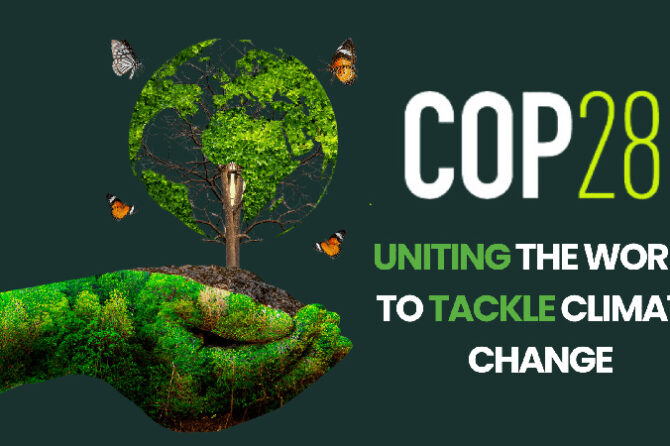
Former Vice President of USA, Al Gore. Chair and co-founder of Generation Investment Management, @ClimateReality, founder & co-founder @ClimateTRACE posted on his twitter handle, “The chances for real progress at COP28 were badly damaged early this year when an oil company CEO was appointed to lead the negotiations. And now investigative journalists have confirmed some of the worst fears of those who criticized that absurd appointment with the shocking news that the President-designate has been using the meetings he has set up with nations around the world to sell more oil and gas. At the same time, the fossil fuel company he leads, has been preparing to launch one of the largest expansions of oil and gas production of any company in the world — timed to begin immediately after COP28 concludes. Using international climate talks as leverage to shore up support for pumping more oil and gas at a time when we urgently need to phase out fossil fuels is — to say the least — utterly appalling.”
Yet, there is silver lining in the dark clouds. The 28th session of the Conference of the Parties (COP28) to the UNFCCC marked a pivotal moment in climate change discourse with the establishment of a loss and damage fund. This initiative reflects a long-awaited acknowledgment of the disproportionate impact of climate change on developing countries. These nations, despite contributing the least to the causes of climate change, face the most severe consequences, including extreme weather events, rising sea levels, and devastating droughts. In this article, we delve into the potential impact of the loss and damage fund on these vulnerable countries, exploring its significance, challenges, and the path forward.

Understanding the Loss and Damage Fund
The loss and damage fund, agreed upon at COP28, aims to provide financial support to developing countries grappling with the harsh effects of climate change. The agreement follows years of negotiation and reflects a growing recognition of the need for equity in the global response to climate change. With pledges from countries like the UAE, Germany, and the United States, the fund is off to a promising start.
Potential Impacts on Developing Countries
Immediate Relief and Recovery: The primary benefit of this fund is to offer immediate financial assistance to countries hit by climate-related disasters. This assistance can help in rebuilding infrastructure, providing emergency aid, and supporting recovery efforts, thereby reducing the time taken for a community to bounce back.
Building Resilience: Beyond immediate relief, the fund can contribute to longer-term resilience-building measures. This includes investing in climate-resilient infrastructure, sustainable agriculture, and early warning systems that can mitigate future climate-related risks.
Promoting Sustainable Development: The fund can also align with sustainable development goals (SDGs) by supporting projects that address climate change while promoting economic and social development. This dual approach is crucial for developing countries, where development needs are often urgent.
Compensation for Loss and Damage: For losses that are irreversible – such as loss of land to rising sea levels – the fund serves as a form of compensation, acknowledging the responsibility of developed nations in causing climate change.
Challenges and Concerns
While the establishment of the fund is a significant step, several challenges remain:
Adequate Financing: The pledges made at COP28 are just the beginning. There’s a need for a continuous flow of funds to match the scale of loss and damage experienced by vulnerable countries. The absence of a defined replenishment cycle at COP28 raises concerns about the fund’s sustainability.
Equitable Distribution: Ensuring that funds reach the most affected communities is a significant challenge. There’s a risk of funds being misallocated or not reaching those in dire need due to bureaucratic hurdles or lack of local capacity.
Accountability and Transparency: There must be clear mechanisms for tracking the use of funds, ensuring accountability, and assessing the impact of funded projects.
Balancing Immediate Relief and Long-Term Resilience: Striking a balance between addressing immediate needs and investing in long-term resilience projects is crucial. The fund should not just be reactive but also proactive in addressing the underlying vulnerabilities.
The Way Forward
Scaling Up Contributions: Developed countries, international organizations, and the private sector must scale up their contributions. Innovative financing mechanisms, such as levies on carbon-intensive industries, can be explored to bolster the fund.
Involving Local Communities: Local communities should be actively involved in decision-making processes to ensure that the support aligns with their needs and priorities.
Integration with National Policies: Countries receiving funds should integrate this support into their national climate action plans, ensuring alignment with broader climate and development goals.
Strengthening Monitoring and Evaluation: Robust monitoring and evaluation mechanisms should be in place to track the effectiveness of the fund and make necessary adjustments.
Fostering Global Cooperation: The fund should be seen as a tool for fostering global cooperation in the face of climate change, encouraging countries to share best practices and learn from each other.
Conclusion
The establishment of the loss and damage fund at COP28 is a ground-breaking step in recognizing and addressing the disproportionate impact of climate change on developing countries. However, its success hinges on sustained and scaled-up financial contributions, equitable distribution, and effective implementation. As climate change continues to pose an existential threat, particularly to vulnerable nations, the loss and damage fund represents not just a financial mechanism, but a symbol of global solidarity and moral responsibility. The road ahead is challenging, but with collective effort and commitment, this fund can be a beacon of hope and a catalyst for meaningful change in the fight against climate change.
Prof. Dr. Prahlada N. B
4 November 2023
Chitradurga.

















Leave a reply